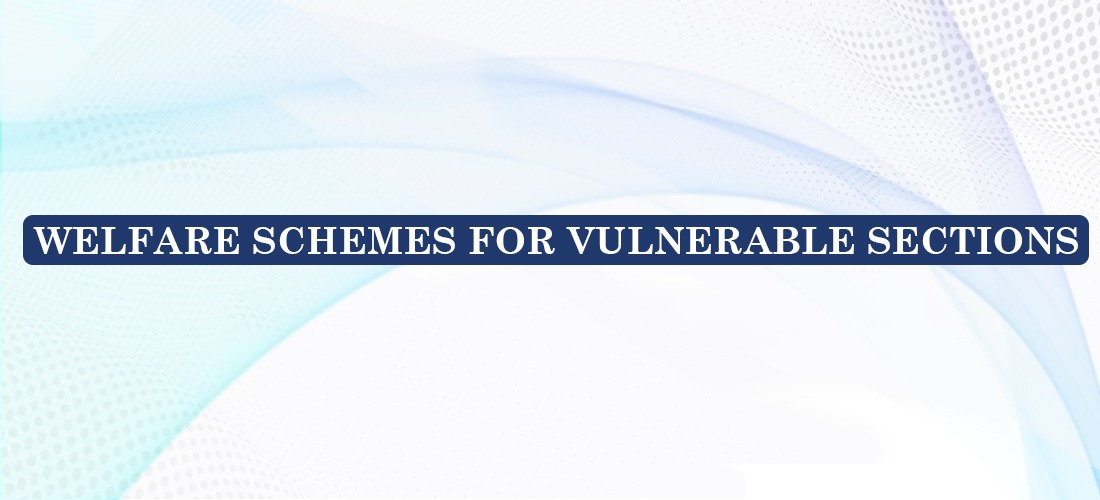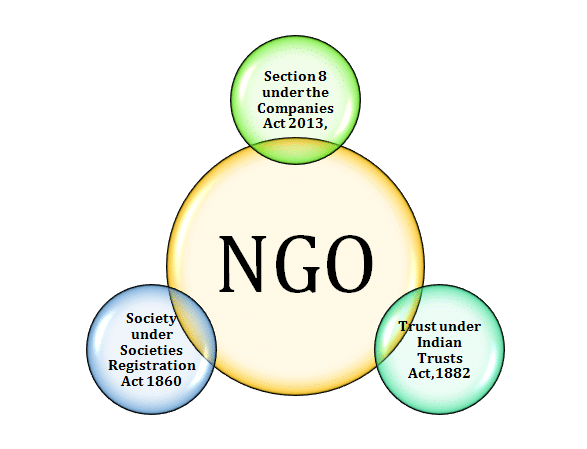- Courses
- GS Full Course 1 Year
- GS Full Course 2 Year
- GS Full Course 3 Year
- GS Full Course Till Selection
- Answer Alpha: Mains 2025 Mentorship
- MEP (Mains Enrichment Programme) Data, Facts
- Essay Target – 150+ Marks
- Online Program
- GS Recorded Course
- Polity
- Geography
- Economy
- Ancient, Medieval and Art & Culture AMAC
- Modern India, Post Independence & World History
- Environment
- Governance
- Science & Technology
- International Relations and Internal Security
- Disaster Management
- Ethics
- NCERT Current Affairs
- Indian Society and Social Issue
- NCERT- Science and Technology
- NCERT - Geography
- NCERT - Ancient History
- NCERT- World History
- NCERT Modern History
- CSAT
- 5 LAYERED ARJUNA Mentorship
- Public Administration Optional
- ABOUT US
- OUR TOPPERS
- TEST SERIES
- FREE STUDY MATERIAL
- VIDEOS
- CONTACT US
WELFARE SCHEMES FOR VULNERABLE SECTIONS
WELFARE SCHEMES FOR VULNERABLE SECTIONS

WELFARE SCHEMES FOR VULNERABLE SECTIONS
What are Vulnerable Groups?
The expression "weak gatherings" alludes to gatherings that could be especially impacted by horrible conditions, for example, when grown-ups can't uphold their families sufficiently because of medical issues like handicap, disease, advanced age, or another trademark, or when a gathering's asset enrichment is lacking to produce sufficient pay from any suitable sources.
There are a number of socioeconomic obstacles that make it difficult for certain communities in India to get health care.
Some Vulnerable sections of Indian Society:
- Religious Minorities: As a result of their inferiority and marginalisation in relation to the dominant faith.
- Linguistic Minorities: As a result of their social isolation
- Women: Due to various customs and patriarchy (male sex is considered to be superior to females in society)
- Scheduled Castes (SC): As a result of their subjugation and poor social standing brought on by the Caste System
- Scheduled Tribes (ST): As a result of their socioeconomic and educational disadvantage
- Elderly People: For being neglected by their families and society
- Disabled People: Since of their inability, both physically and mentally, unable to do tasks as other people can
Welfare Schemes for Vulnerable Sections:
The Indian government intermittently presents government assistance programs for different fragments of society. These programs are essential for addressing a number of socioeconomic issues that afflict Indian society, so any concerned citizen must be aware of them.
These programs are especially important for disadvantaged groups because they face a greater risk of poverty and social isolation than the general population.
The various welfare programs for various vulnerable segments of society are as follows:
- Welfare schemes for Scheduled Caste: Pradhan Mantri Adarsh Gram Yojana (PMAGY), Babu Jagjivan Ram Chhatrawas Yojna, The ‘Prohibition of Employment as Manual Scavengers and their Rehabilitation Act, 2013, National Scheduled Castes Finance and Development Corporation (NSFDC), and Scheduled Castes and Scheduled Tribes (Prevention of Atrocities) Act, 1989 are some of the schemes for Scheduled Caste people in India.
- Welfare schemes for Scheduled Tribes: Pradhan Mantri Van Dhan Yojana, Van Bandhu Kalyan Yojana, Vocational Training Centres in Tribal Areas, and Eklavya Model Residential School are some of the initiatives for Scheduled Tribes people in India.
- Welfare schemes for Women: Beti Bachao Beti Padhao Scheme, One Stop Centre Scheme, UJJAWALA, Rehabilitation and Re-integration of Victims of Trafficking and Commercial Sexual Exploitation, SWADHAR, Rajiv Gandhi Scheme for Empowerment of Adolescent Girls – Sabla, Pradhan Mantri Matritva Vandana Yojana are some of the schemes. The security and empowerment of women and children have received special concern from the Indian government. These programmes provide solutions to the main issues affecting women in India and help to reduce the growing unfairness toward women.
- Welfare schemes for Religious Minorities: Nai Roshni, Maulana Azad National Fellowship (MANF) Scheme, Padho Pardesh, Nai Udaan, Hamari Dharohar Seekho aur Kamao, Jiyo Parsi, Minority Cyber Gram, Maulana Azad Sehat scheme, and Computerization of Records of State Wakf Boards are few schemes for empowerment of religious minorities.
- Welfare schemes for Elderly People: Rashtriya Vayoshri Yojana, Varishtha Pension Bima Yojana, Pradhan Mantri Vaya Vandana Yojana, Indira Gandhi National Old Age Pension Scheme (IGNOAPS), National Policy for Older Persons, and Annapurna helps the elderly people.
- Welfare schemes for Disabled People: Accessible India Campaign (Sugamya Bharath Abhiyan), Sugamya Pustakalaya, Deendayal Disabled Rehabilitation Scheme, National Awards for Empowerment of Persons with Disabilities, and Unique Disability Identification (UDID) Project are for Disabled People.
Benefits of the welfare programs for the most disadvantaged groups:
- There are few positive outcomes from these welfare programs for vulnerable segments of Indian society. They are:
- For disadvantaged children, women, and others, programs for economic security can lessen the negative effects of poverty and increase the likelihood of equal opportunity.
- Government economic security programs like food aid, housing subsidies, and tax credits for working families help families meet their basic needs and keep millions of kids out of poverty.
- The basic infrastructure and facilities of numerous government-run schools were improved through the Rashtriya Madhyama, Sarva Siksha Abhiyan, and Samagra Siskhana Center programs.
- Every day, the mid-day meal program feeds 10 million children, resulting in better nutritional outcomes and lower dropout rates.
- To support their household income and achieve self-sufficiency, low-income families will receive PM-KISAN cash assistance.
- Increasing children's future economic potential and improving academic performance are two of the longer-term benefits.
- It has been demonstrated that health insurance programs improve birth outcomes and longevity.
- The government was able to successfully combat polio, malaria, and HIV when the goal was clear and well-known.
- One program that could help women achieve financial stability and independence is the Sukanya Samriddhi Yojana.
Loopholes in the Welfare Schemes for Vulnerable Sections
- Errors in Beneficiary Identification: in Welfare Programs for the Poor and Other Vulnerable Populations relying on SECC 2011 data that do not accurately reflect the actual situation. Inadequate beneficiary identification results in inclusion and exclusion errors, which sometimes leave out those in need.
- Executives' ineffectiveness: Corruption, a misalignment of incentives, ineffective monitoring, a lack of accountability, and inefficiency are all causes of inefficiency. Numerous frauds and anomalies have surfaced as plans have been implemented.
- Issues with the infrastructure: The absence of appropriate infrastructure in a variety of fields, including transportation, education, and health, further impedes the success of welfare programs.
- Schemes with political biases: Rather than considering the best interests of the nation as a whole, some plans are announced with an eye toward political advantages. For example, bankers have criticized state-by-state farm loan exemptions as detrimental to the nation's credit culture.
- Lacks a comprehensive strategy: The majority of welfare programs have emphasized individual beneficiaries' needs more than integrated development.
- Insufficient use of funds: As a result of inadequate plans and strategies for implementation, the allocated funds frequently remain underutilized. According to the 2019 Tamil Nadu State Finance Audit Report, the School Education Department lost a total of Rs. 1,627 crore in 2018–19 because several Sarva Shiksha Abhiyan programs were not implemented.
Way Forward
- The policies are implemented at the state, district, and village levels despite being developed at the center. As a result, local government strengthening is required.
- Before coming up with plans to fix the systemic problems, policymakers should get the information they need.
- Processes must be streamlined, success must be rewarded, bureaucracy must be reduced, and technology must be utilized to its full potential in order to achieve the desired outcomes.
- Combining plans from the central and state levels that are similar can improve convergence and prevent leakage.
- All significant welfare programs must incorporate gender consideration.
- Using AI, big data, etc., technology, the public authority should ensure that no certified recipient is ignored and that the individuals who needn't bother with it are killed.
- India will not see growth in many areas until eligible recipients are able to take advantage of the welfare program established by the Union and State governments.


